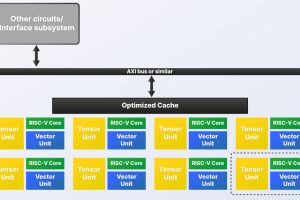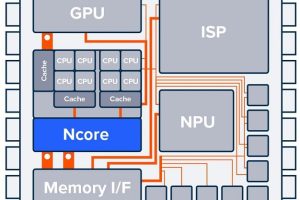
Suppliers to the semiconductor design chain are also experiencing great years. we’ve seen a dramatic rebound in EDA stock prices for Cadence, Mentor, and Magma, and Synopsys continues to be the cash machine that fuels acquisitions to fortify its lead position in the space.
In the recent IP-SOC conference in Grenoble, France, Gartner also reported expectations for a banner year in semiconductor IP with 2010 revenues expected to rise 24.9% and that the number of 3rd-party IP blocks in chips will double by 2014.
Even more remarkable is that this has occurred during a year where there is still much doubt in the economic stability of the global economy with governments saddled with enormous deficits, banks holding onto their money, and consumers shell-shocked into a level of thriftiness not seen in generations.
As we entered the “rabbit hole” in 2009 (see my November 2008 piece, “Doom and Boom”), we all knew that we were headed for a new era, but we couldn’t know what it would be like on the other side. I think the record revenues we are seeing in 2010 point to some significant changes in semiconductor and electronic systems business and we are getting a glimpse of the new Wonderland.
So, what changes do we see on this side?
Globalization found its limit. It turns out that despite the allure of moving their workforce to low-cost regions, companies found there was a natural limit as to how fast and how complete that transition could be. It’s not that easy to transplant 50 years of microelectronics know-how so quickly. The conveyor belt of jobs to Asia slowed way down.
Furthermore, it turns out that the workers in some of these countries strangely aspire to be more than the serfs to the west. When the workers at Foxconn would rather jump off the roof of their dormitory housing than face another 12 hour day of assembling iPhones, it makes a statement regarding the long-term viability of the low-cost strategy.
The race to be cheapest ended at the bottom of a cliff. For a while, customers were treating semiconductors as little more than technology-enhanced sand. Calculate the silicon area of a chip, add a manufacturing cost to that, add a few points of profit for the company, and that’s the price. No premium for design, expertise, quality.
Turns out that semiconductors, and especially semiconductor design is not a commodity that can be driven by the market price of sand. Companies that played into that mindset found themselves with undifferentiated products and no cash to invest in next generation technologies.
Consumers became discriminating. Two years ago my wife brought home from The Sharper Image store a photo scanner that she wanted to convert old 35mm negatives to digital format. At $99, it was a “great deal”. Turns out that the resolution of the converted photos were on the order of something one might have seen in an 1870’s photo – grainy and (unintentionally) sepia-toned.
Declaring her great deal “crap”, she returned the item to the store and bought a Canon scanner for $199. With consumers spending less, we also see consumers being increasingly conscious of quality and value. Today’s younger consumers grew up in a world of fast moving technology and will not allow half-baked goods to survive. A shiny coat of paint will not cover the sins of inferior semiconductor products within. (Postscript: The Sharper Image declared bankruptcy shortly after my wife returned the scanner. I’m glad she got her money back.)
Off the rack is sooo 2005. I’m from that baby boomer generation that is sometimes affectionately referred to as the “Me Generation”. It seems that our spawn have carried on that trait in the types of products that they buy. Today’s consumers don’t want to swim with the crowd, they want to standout, they want to be different, and they want their products “personalizable.”
Look no further than the iPhone and the other smart phones with their myriad of apps to make a person’s phone a unique fashion accessory that is adapted to their own needs. Just as you can tell a lot about a person by seeing what books are on their nightstand, you can tell a lot about a person by which apps they have on their smart phone.
Viva la differentiation! The big change I see in semiconductors is an explicit strategy shift towards differentiation through customization. As mentioned earlier, cheaper and undifferentiated is a provably failed strategy in not only that there is no money in it, but that’s not want consumers want either. What semiconductor companies are finding is that they need to focus on the niches where their unique specialization adds value that cheaper competitors cannot easily reach.
There are some great examples of this, but perhaps the best one in recent memory is Apple Computer acquiring PA Semi a few years for reasons that no one at the time could figure out. It seems the objective of that move was related to the development of the super-fast, super-low-power A4 microprocessor based on ARM technology. Now Apple has ownership of the key component in the iPhone franchise – the microprocessor that makes all those apps possible. By holding that technology closely rather than buying it from other companies who could sell it to their competitors, Apple stays one step ahead of its competitors with differentiated technology.
But the trend for differentiation seems to be causing other disturbances in the status quo. For years, ASIC starts have been on the steady decline. What I have seen in the last year is an unusually strong increase in the number of ASIC design starts that require lots of 3rd-party IP, but also contain some key proprietary technology that allows them to differentiate their customer’s end systems by nature of that integration.
The value of that integration to the customer is much greater than the silicon area cost savings and the producer of that ASIC nets the added value. Furthermore, such differentiation makes the socket for that ASIC very sticky and resistant to being designed out in the future.
We have emerged on the other side of the rabbit hole we entered two years ago and are in a new era where systems level considerations together with understanding of consumer behaviours are important to the semiconductor industry. The good news for those of us working in it is that we did not wind up in a world where the outputs of great scientific minds are rendered into a commodity when reduced to silicon.
Warren Savage, President and CEO of IPextreme,is a well-knownand published authority in the field ofsemiconductor intellectualproperty.
He has a long history of pushing the envelope of designmethodologyfrom his work in fault tolerant computing at TandemComputers inthe 1980’s and driving reliable design methodologiesintocommercial practice at Synopsys for its DesignWare IP productinthe 1990s. Much of his thinking became embodied in the seminalbookon IP reuse, the Reuse Methodology Manual.
 Electronics Weekly Electronics Design & Components Tech News
Electronics Weekly Electronics Design & Components Tech News



